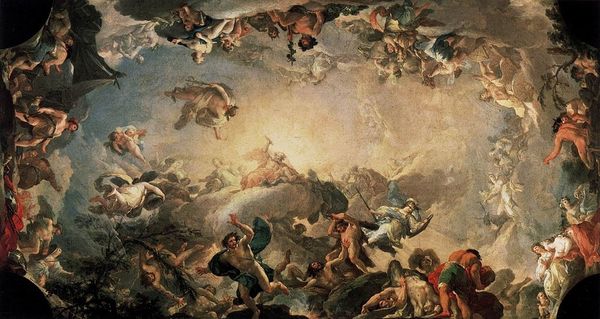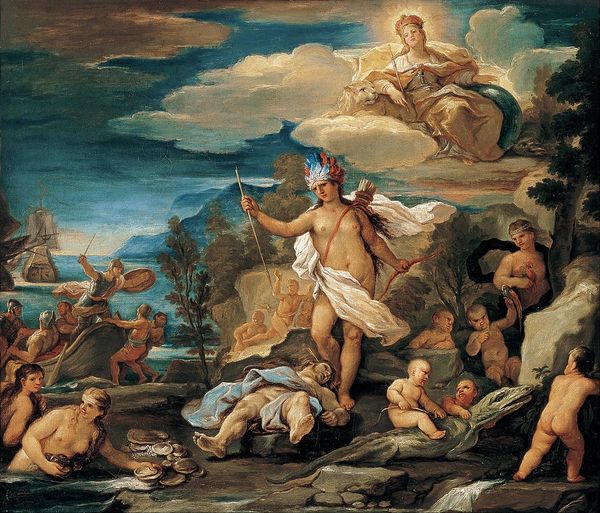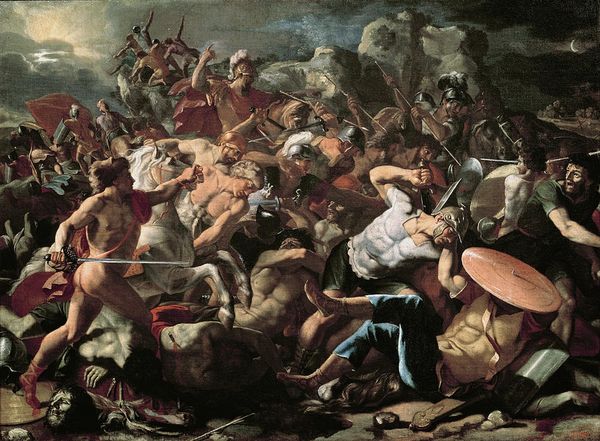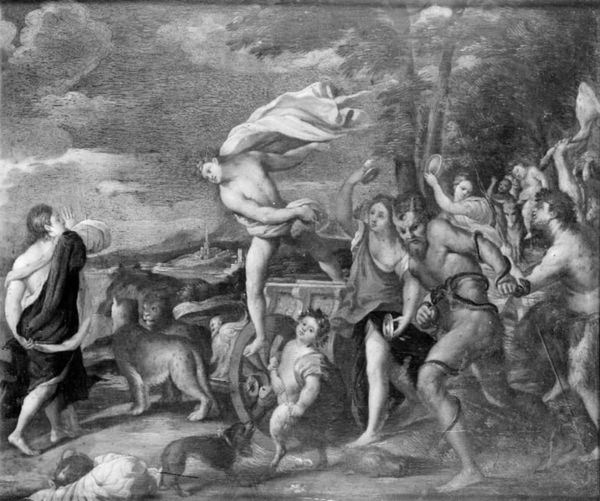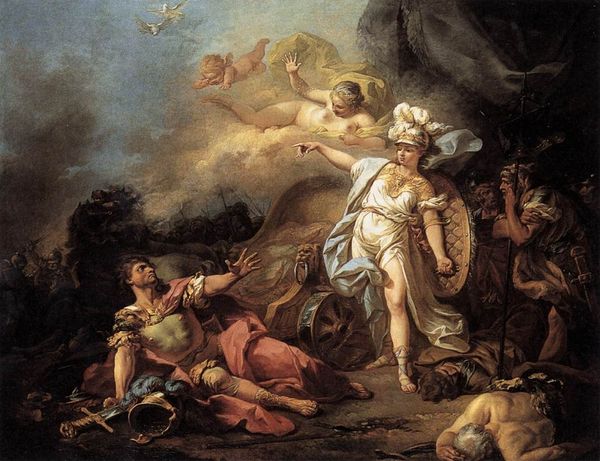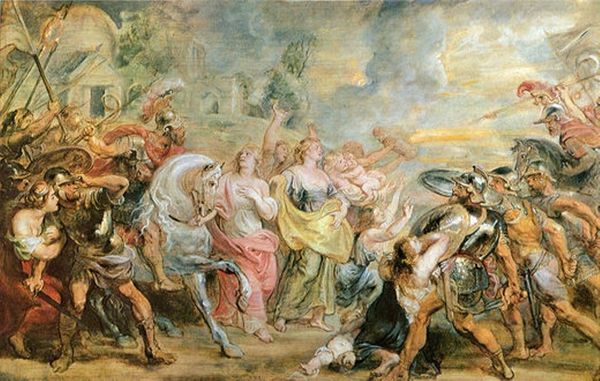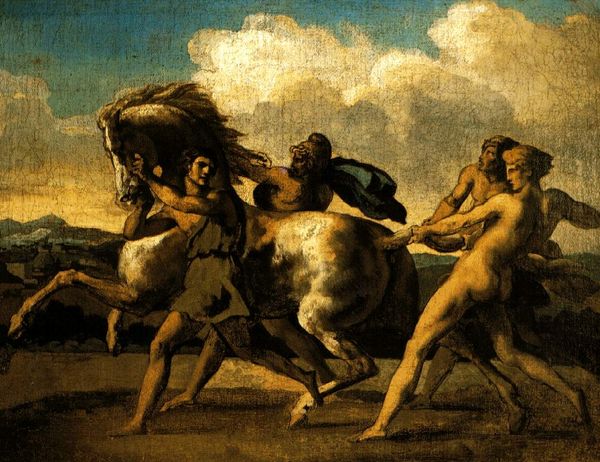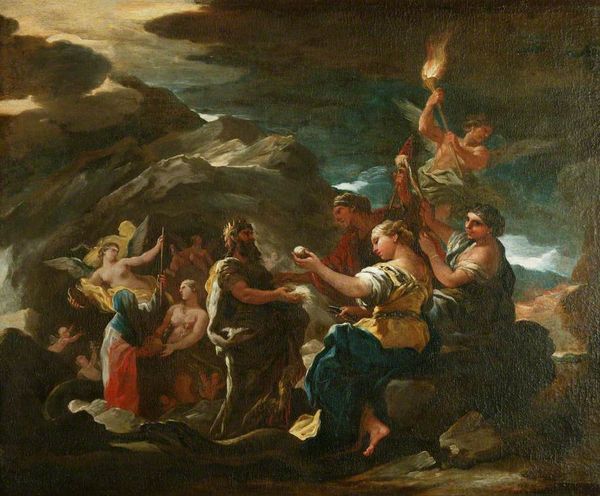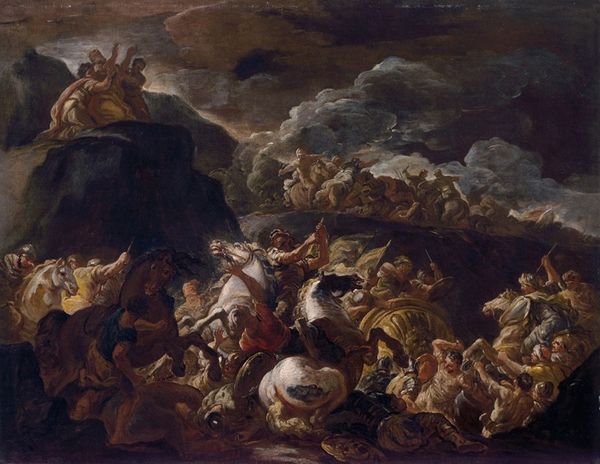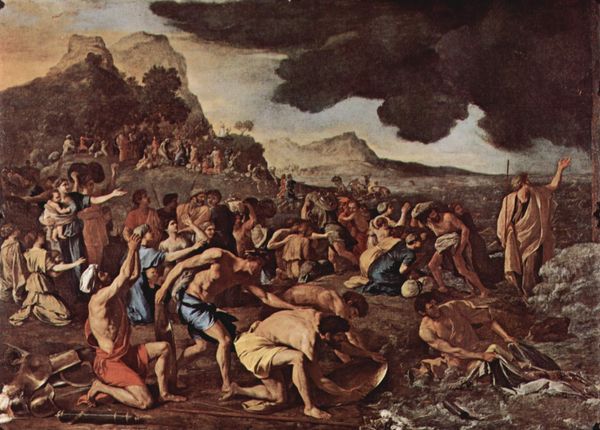
painting, oil-paint
#
narrative-art
#
baroque
#
painting
#
oil-paint
#
figuration
#
oil painting
#
mythology
#
history-painting
Copyright: Public domain
Curator: Luca Giordano's “Mythological Scene with the Rape of Proserpine,” completed in 1685 using oil paints, presents a dramatic interpretation of the classical myth. What strikes you initially? Editor: The sheer dynamism! It's almost operatic. A chaotic swirl of figures, from the depths below to what I assume is the heavens above. Very dramatic! Curator: Absolutely, Giordano masterfully uses the Baroque style to convey that intensity. The figures are caught in mid-action, almost like a freeze-frame from a theatrical performance. What are the possible symbolic connotations you noticed? Editor: I see several potential themes immediately: the triumph of darkness over light with the abduction, then also a shift in the understanding of feminine power. Her abduction, though violent, marks Proserpine's transition into the queen of the Underworld, so the narrative flips from victim to ruler, creating an interesting lens of gendered perspectives from different historical contexts. Curator: An astute observation about Proserpine’s evolving role. Giordano's choice of characters also speaks volumes about cultural beliefs in 17th century Europe, for whom Greek mythology had been appropriated and then modified. We also see figures of death like Charon in the River Styx on the left, juxtaposed to all sorts of mythological entities like Cerberus guarding the underworld... A constant cycle between heaven and hell seems apparent here. Editor: Given that, one could interpret that central dark cloud enveloping Pluto and Proserpine not merely as a compositional tool but as a signifier of profound transformation, a visual eclipse indicating a permanent shift, and yet... the entire image still operates with its socio-political power from its original period. How was something like this interpreted, given Giordano's cultural moment? Curator: I imagine Giordano was keenly aware of painting this with respect to its likely viewership: this work may reinforce certain expectations around authority figures but at the same time offer alternative frameworks where boundaries between sacred and profane blur. The use of classical themes provides a level of cultural credibility but at the same time might open interpretations about political and personal agency. Editor: Indeed. Reflecting on "Mythological Scene," one grasps not only the myth's enduring resonance, but Giordano’s unique, vivid dramatization, inviting an understanding of feminine agency. Curator: Ultimately, what remains resonant for me is how this piece functions almost as a barometer of how socio-political concerns intersect in artistic representation over time, making this work enduringly relevant in conversations about mythology, gender, and authority.
Comments
No comments
Be the first to comment and join the conversation on the ultimate creative platform.
